Abstract
The course of induced tertian malaria has been studied in patients in psychoneurological hospitals in Moscow over a long period. Various strains of P. vivax were used to infect patients; the sporozoites were transmitted by Anopheles maculipennis atroparvus bred under laboratory conditions. There are marked differences between the dates of onset of relapses, reckoned from the primary manifestations of the disease, in patients developing malaria after long and short incubation periods. P. vivax strains which have a short incubation period are characterized by producing in patients a series of relapses following a long latent period; strains with a long incubation period are characterized by the occurrence of relapses during the first 3 months after the end of the primary series of attacks. However, some P. vivax strains give rise to both types of relapse, depending on the incubation period. In any event, the duration of the disease does not, as a rule, exceed 2 years, including the incubation period. The number of mosquitos (and hence the number of sporozoites) used to infect a patient does not have any noticeable effect on the number and frequency of relapses. In short-incubation tertian malaria, the use of quinocide during the period of treatment of the primary manifestations greatly reduced the number of relapses; in long-incubation tertian malaria similarly treated with quinocide, no relapses occurred.
Full text
PDF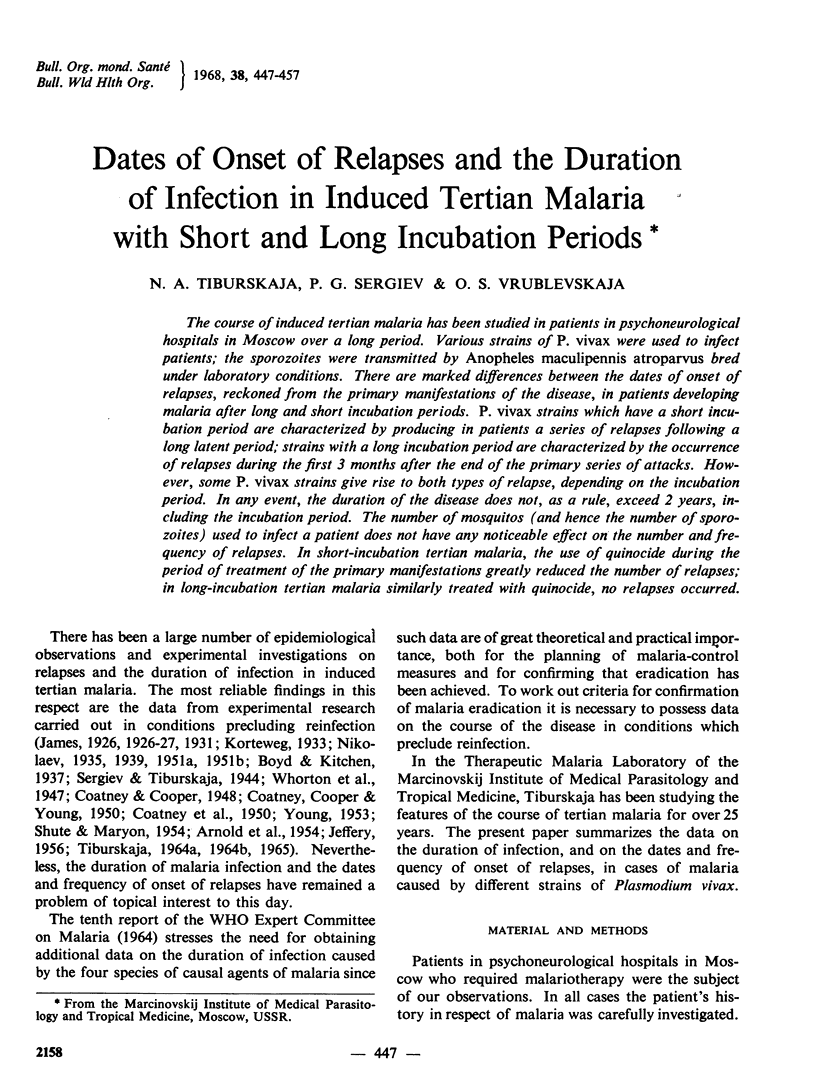
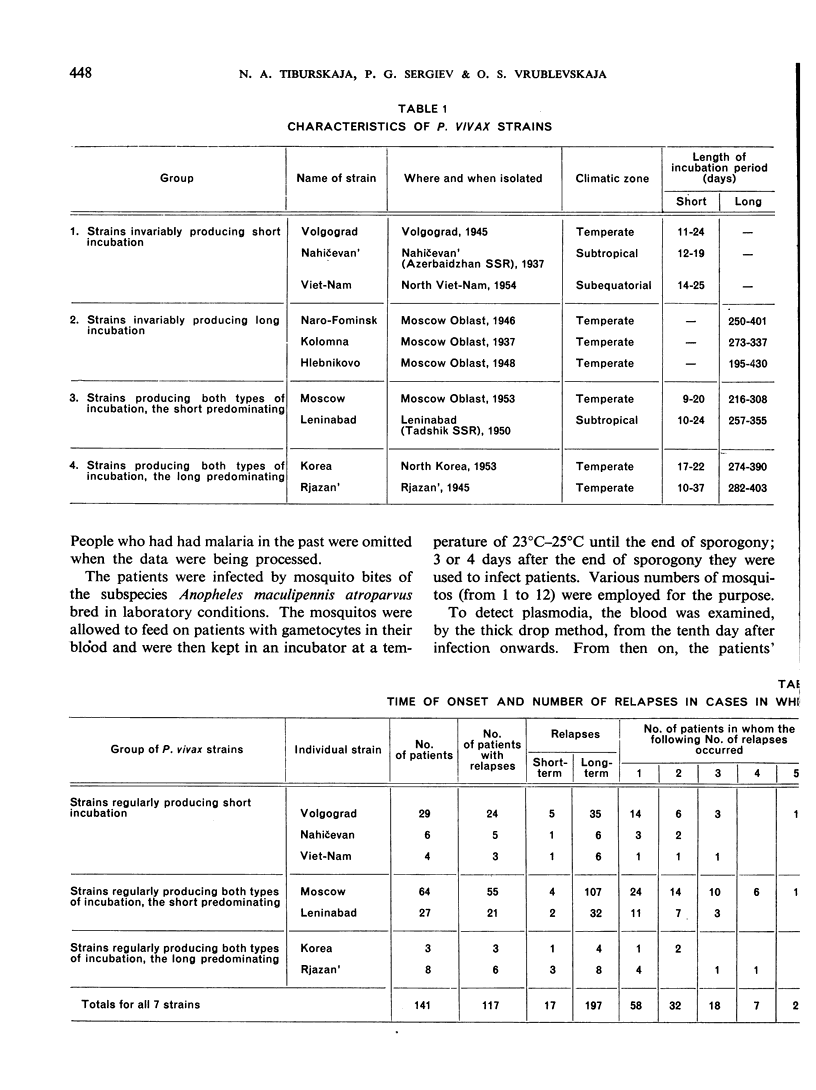
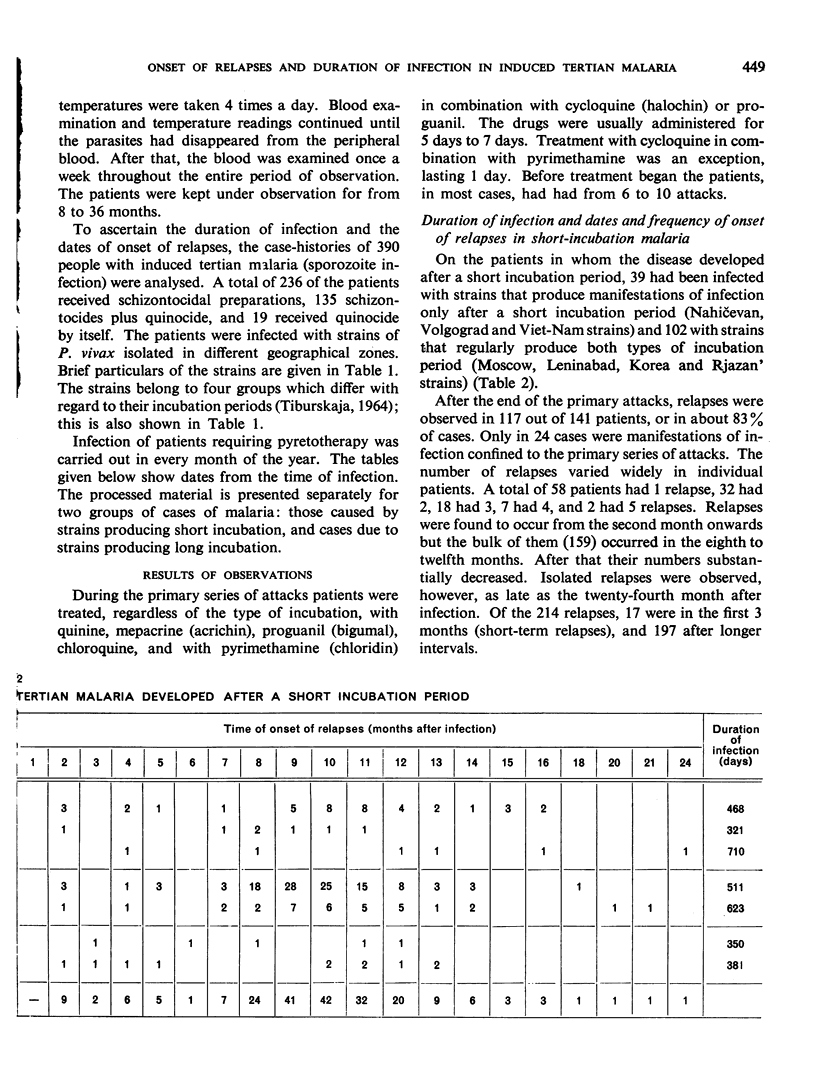
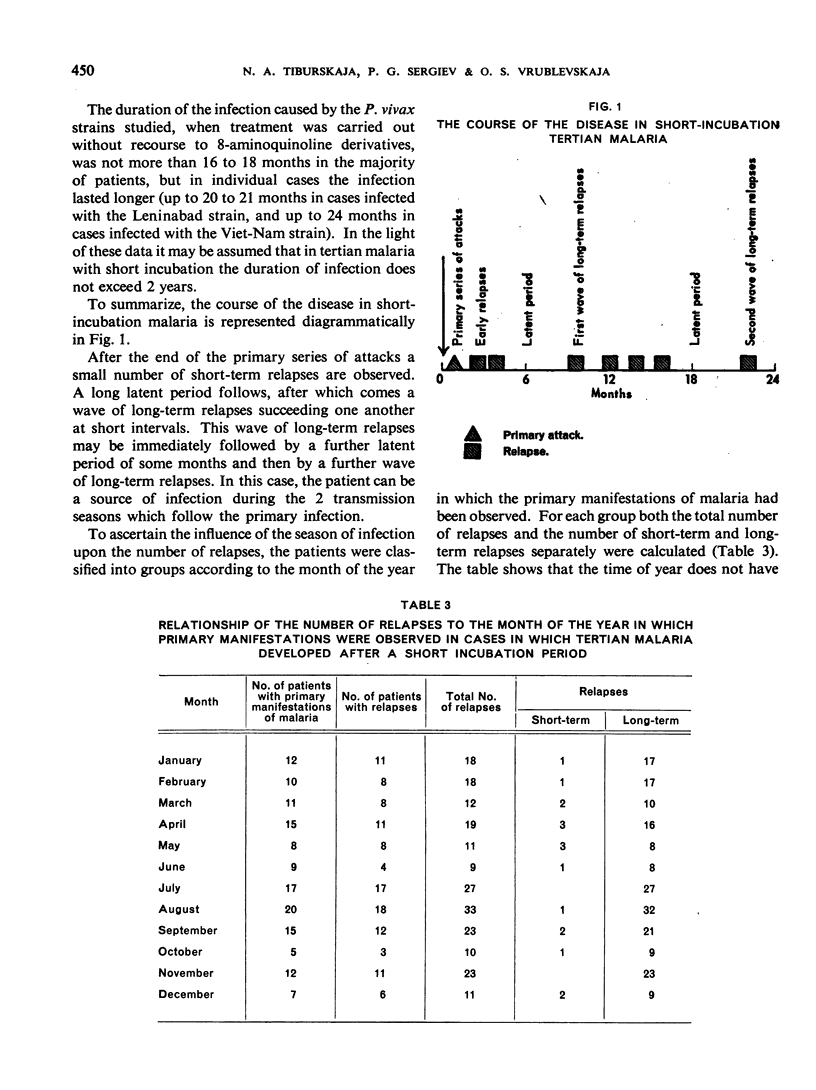
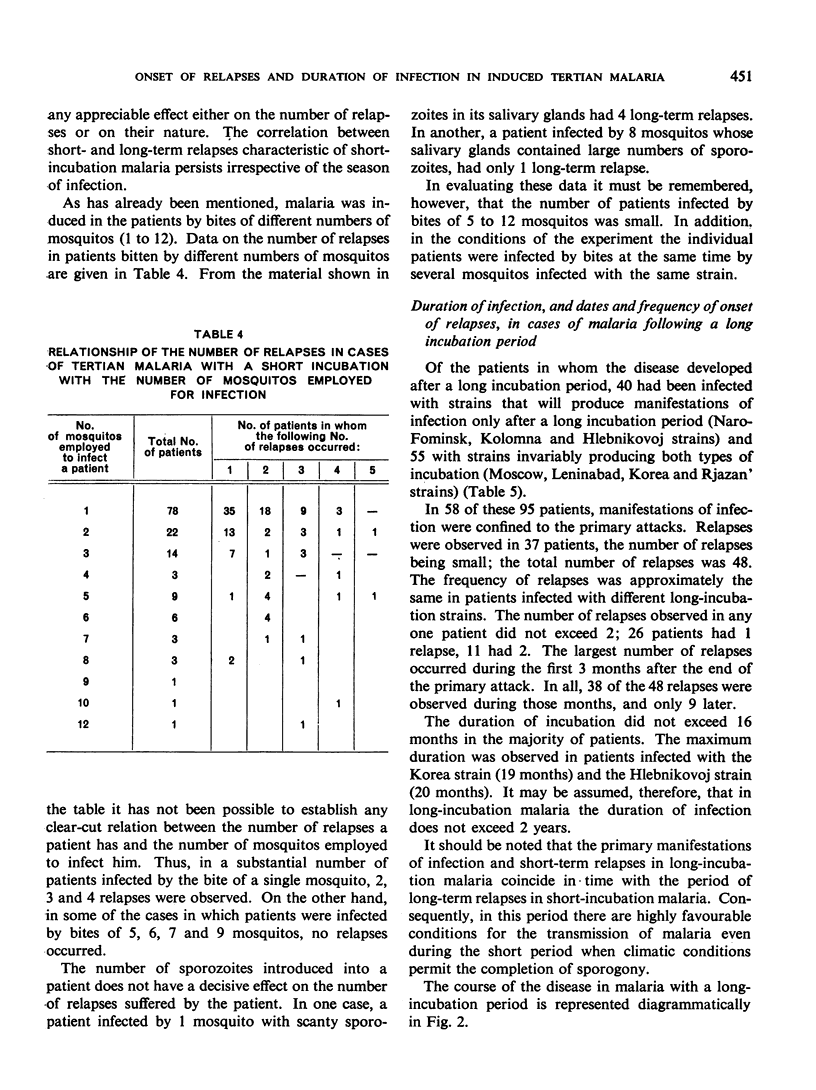
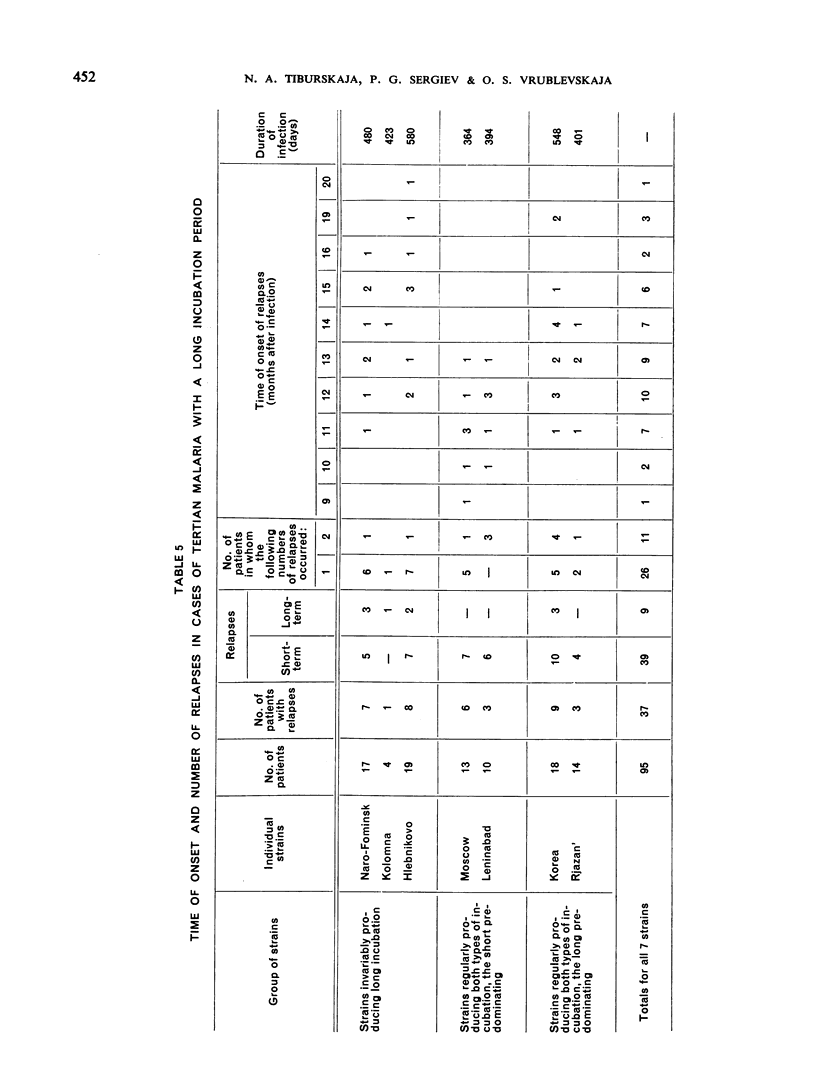

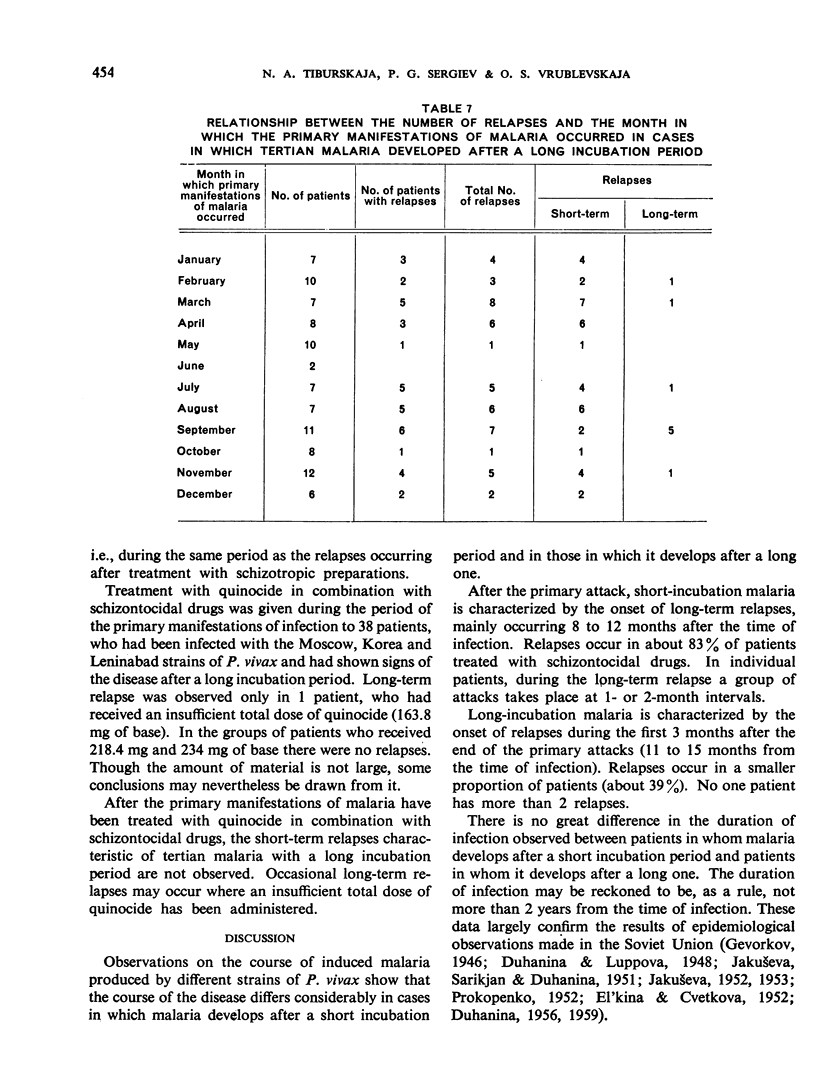
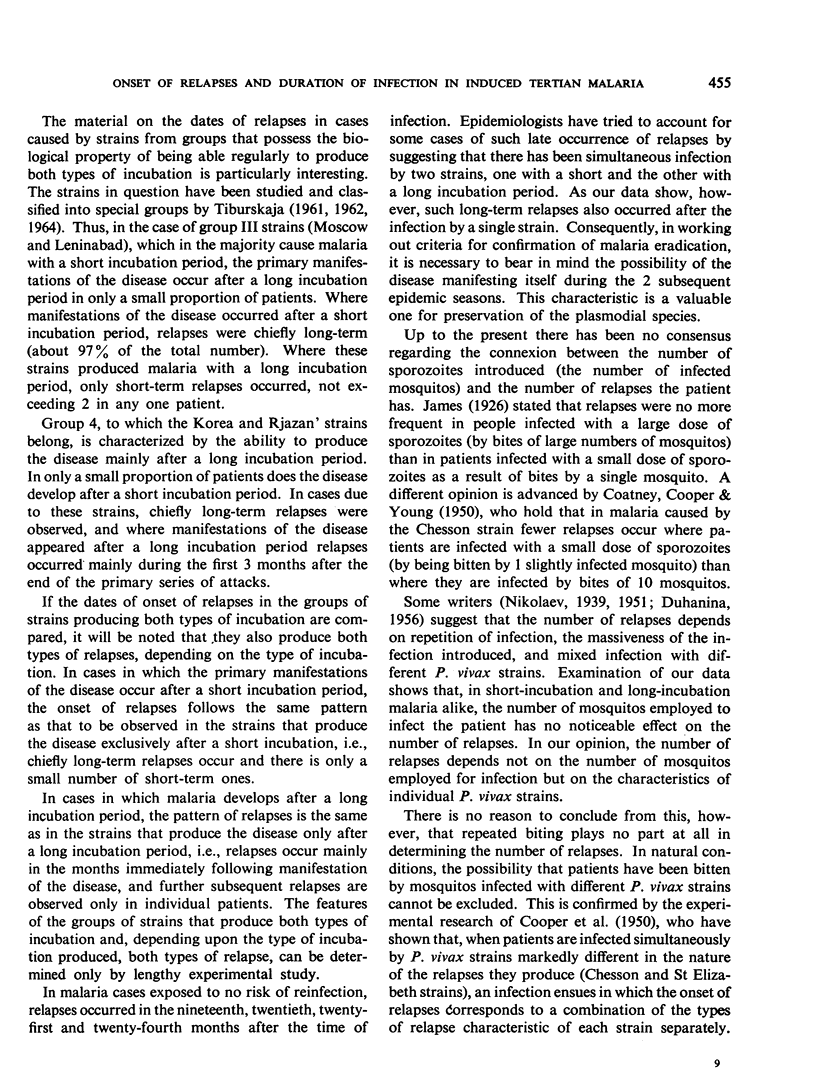
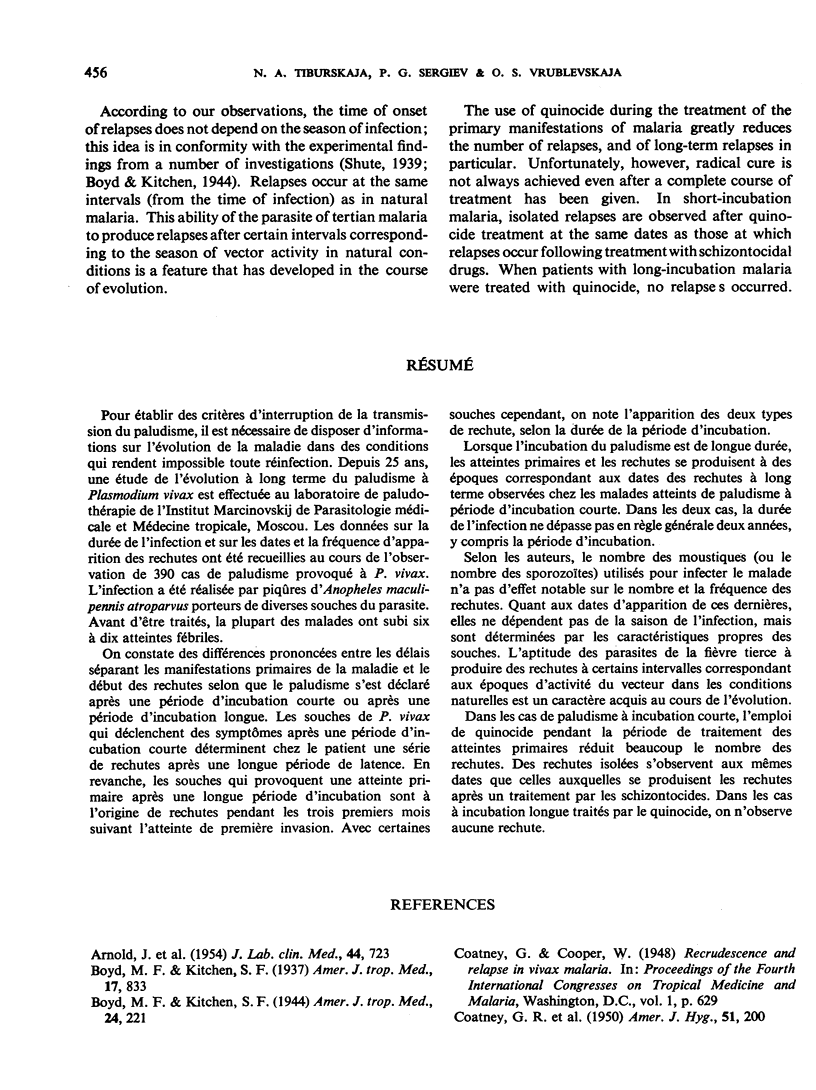
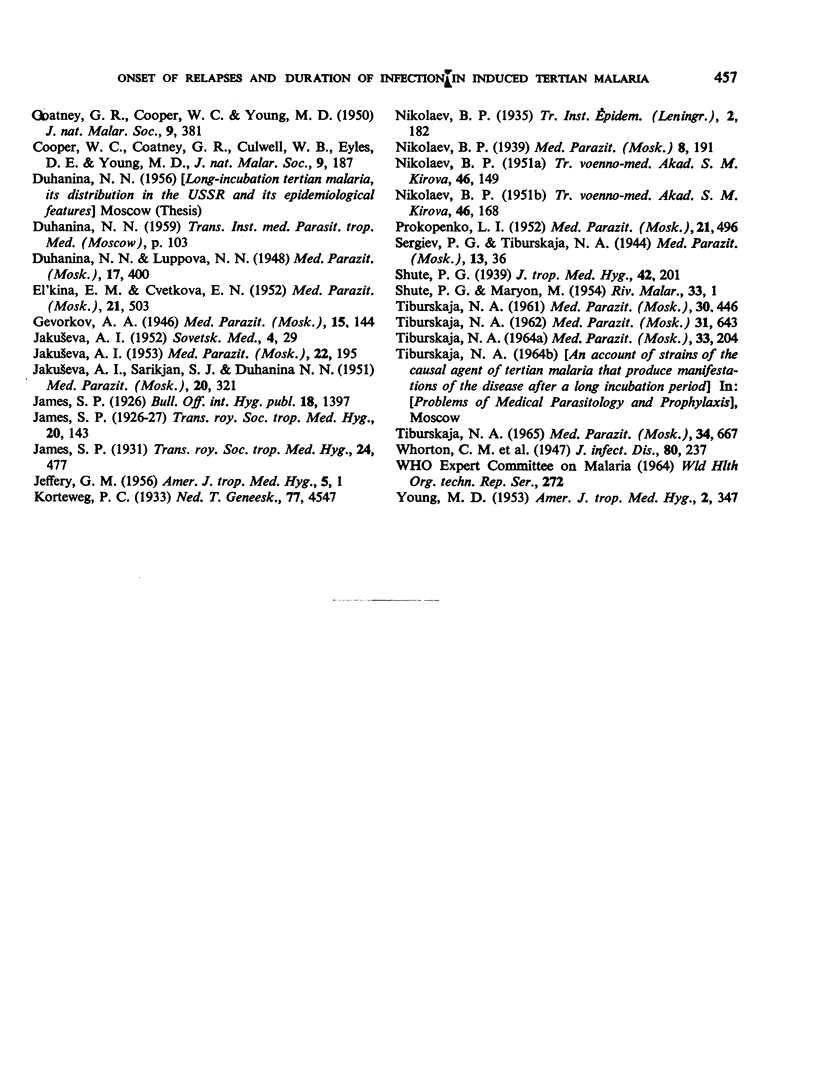
Selected References
These references are in PubMed. This may not be the complete list of references from this article.
- ARNOLD J., ALVING A. S., HOCKWALD R. S., CLAYMAN C. B., DERN R. J., BEUTLER E. Natural history of Korean vivax malaria after deliberate inoculation of human volunteers. J Lab Clin Med. 1954 Nov;44(5):723–726. [PubMed] [Google Scholar]
- COATNEY G. R., COOPER W. C., YOUNG M. D. Studies in human malaria. XXX. A summary of 204 sporozoite-induced infections with the Chesson strain of Plasmodium vivax. J Natl Malar Soc. 1950 Dec;9(4):381–396. [PubMed] [Google Scholar]
- COOPER W. C., COATNEY G. R., CULWELL W. B., EYLES D. E., YOUNG M. D. Studies in human malaria. XXVI. Simultaneous infection with the Chesson and the St. Elizabeth strains of Plasmodium vivax. J Natl Malar Soc. 1950 Jun;9(2):187–190. [PubMed] [Google Scholar]
- JEFFERY G. M. Relapses with Chesson strain Plasmodium vivax following treatment with chloroquine. Am J Trop Med Hyg. 1956 Jan;5(1):1–13. doi: 10.4269/ajtmh.1956.5.1. [DOI] [PubMed] [Google Scholar]
- SHUTE P. G., MARYON M. A contribution to the problem of strains of human plasmodium. Riv Malariol. 1954 Jun;33(1-3):1–21. [PubMed] [Google Scholar]
- TIBURSKAIA N. A. GRUPPIROVKA SHTAMMOV P. VIVAX PO TIPU INKUBATSII. Med Parazitol (Mosk) 1964 Mar-Apr;33:204–211. [PubMed] [Google Scholar]
- Tiburskaia N. A. Opisanie shtammov vozbuditelia trekhdnevnoi maliarii, vyzyvaiushchikh proiavleniia infektsii posle korotkoi inkubatsii. Med Parazitol (Mosk) 1965 Nov-Dec;34(6):667–672. [PubMed] [Google Scholar]
- YOUNG M. D. Malaria during the last decade. Am J Trop Med Hyg. 1953 May;2(3):347–359. doi: 10.4269/ajtmh.1953.2.347. [DOI] [PubMed] [Google Scholar]


